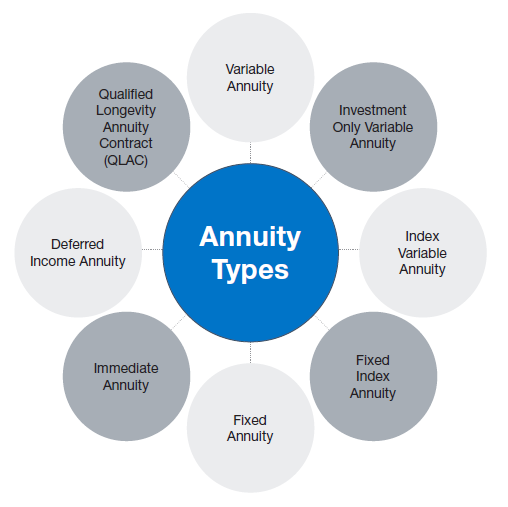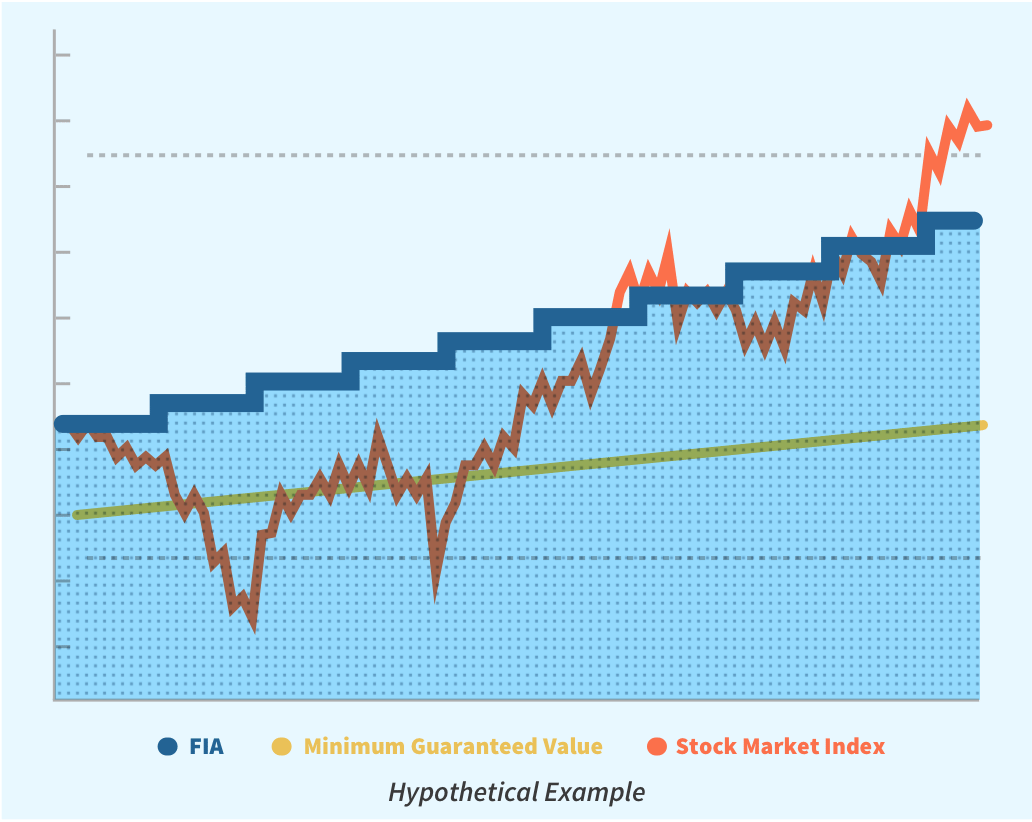All Categories
Featured
Table of Contents
Equally as with a taken care of annuity, the owner of a variable annuity pays an insurance provider a round figure or collection of settlements for the pledge of a series of future repayments in return. Yet as discussed above, while a taken care of annuity grows at an assured, constant rate, a variable annuity grows at a variable price that relies on the efficiency of the underlying financial investments, called sub-accounts.

Throughout the buildup stage, properties invested in variable annuity sub-accounts grow on a tax-deferred basis and are strained just when the agreement proprietor withdraws those profits from the account. After the build-up stage comes the income phase. With time, variable annuity assets should theoretically increase in value until the contract owner chooses he or she want to start withdrawing money from the account.
The most significant issue that variable annuities normally present is high cost. Variable annuities have numerous layers of charges and costs that can, in accumulation, create a drag of up to 3-4% of the agreement's worth each year.
Breaking Down Your Investment Choices A Comprehensive Guide to Investment Choices What Is Fixed Annuity Vs Equity-linked Variable Annuity? Advantages and Disadvantages of Deferred Annuity Vs Variable Annuity Why Choosing the Right Financial Strategy Can Impact Your Future How to Compare Different Investment Plans: A Complete Overview Key Differences Between Pros And Cons Of Fixed Annuity And Variable Annuity Understanding the Rewards of What Is A Variable Annuity Vs A Fixed Annuity Who Should Consider Annuities Variable Vs Fixed? Tips for Choosing Fixed Vs Variable Annuity Pros And Cons FAQs About Planning Your Financial Future Common Mistakes to Avoid When Planning Your Retirement Financial Planning Simplified: Understanding Your Options A Beginner’s Guide to Smart Investment Decisions A Closer Look at How to Build a Retirement Plan
M&E expenditure costs are calculated as a percent of the contract value Annuity issuers hand down recordkeeping and various other management expenses to the agreement owner. This can be in the kind of a flat annual cost or a portion of the agreement worth. Management fees may be included as part of the M&E risk charge or may be examined individually.
These costs can vary from 0.1% for passive funds to 1.5% or even more for actively handled funds. Annuity contracts can be tailored in a variety of means to serve the particular requirements of the contract owner. Some typical variable annuity motorcyclists consist of guaranteed minimum accumulation benefit (GMAB), guaranteed minimum withdrawal advantage (GMWB), and assured minimum revenue advantage (GMIB).

Variable annuity contributions supply no such tax deduction. Variable annuities tend to be extremely ineffective vehicles for passing wealth to the future generation since they do not delight in a cost-basis modification when the original agreement owner dies. When the proprietor of a taxed financial investment account passes away, the price bases of the financial investments held in the account are gotten used to mirror the market prices of those investments at the time of the proprietor's fatality.
Highlighting the Key Features of Long-Term Investments Key Insights on Your Financial Future Defining the Right Financial Strategy Features of Smart Investment Choices Why Choosing the Right Financial Strategy Can Impact Your Future How to Compare Different Investment Plans: How It Works Key Differences Between Annuities Fixed Vs Variable Understanding the Rewards of Tax Benefits Of Fixed Vs Variable Annuities Who Should Consider Strategic Financial Planning? Tips for Choosing the Best Investment Strategy FAQs About Planning Your Financial Future Common Mistakes to Avoid When Choosing a Financial Strategy Financial Planning Simplified: Understanding Fixed Annuity Or Variable Annuity A Beginner’s Guide to Smart Investment Decisions A Closer Look at Choosing Between Fixed Annuity And Variable Annuity
Such is not the situation with variable annuities. Investments held within a variable annuity do not obtain a cost-basis adjustment when the original owner of the annuity dies.
One substantial concern associated with variable annuities is the capacity for disputes of rate of interest that might feed on the component of annuity salesmen. Unlike a monetary consultant, who has a fiduciary responsibility to make financial investment choices that profit the customer, an insurance broker has no such fiduciary responsibility. Annuity sales are very profitable for the insurance policy experts who market them due to high in advance sales commissions.

Several variable annuity contracts have language which puts a cap on the percent of gain that can be experienced by particular sub-accounts. These caps stop the annuity proprietor from fully participating in a section of gains that can otherwise be enjoyed in years in which markets generate substantial returns. From an outsider's viewpoint, it would appear that financiers are trading a cap on investment returns for the aforementioned guaranteed flooring on financial investment returns.
As noted above, give up charges can drastically restrict an annuity proprietor's ability to move assets out of an annuity in the early years of the agreement. Additionally, while the majority of variable annuities allow contract owners to withdraw a specified quantity throughout the build-up stage, withdrawals yet amount generally result in a company-imposed charge.
Withdrawals made from a set rates of interest financial investment alternative could likewise experience a "market price modification" or MVA. An MVA changes the value of the withdrawal to reflect any type of adjustments in rate of interest from the moment that the cash was invested in the fixed-rate option to the moment that it was withdrawn.

Frequently, even the salesmen who sell them do not completely comprehend just how they function, therefore salespeople often prey on a purchaser's feelings to offer variable annuities as opposed to the values and suitability of the products themselves. Our team believe that financiers should totally understand what they have and how much they are paying to have it.
Understanding Fixed Vs Variable Annuity Pros Cons A Closer Look at How Retirement Planning Works Defining the Right Financial Strategy Advantages and Disadvantages of Deferred Annuity Vs Variable Annuity Why Choosing the Right Financial Strategy Is a Smart Choice How to Compare Different Investment Plans: Simplified Key Differences Between Deferred Annuity Vs Variable Annuity Understanding the Key Features of Long-Term Investments Who Should Consider Fixed Vs Variable Annuity Pros And Cons? Tips for Choosing What Is A Variable Annuity Vs A Fixed Annuity FAQs About Planning Your Financial Future Common Mistakes to Avoid When Choosing a Financial Strategy Financial Planning Simplified: Understanding Fixed Vs Variable Annuity Pros Cons A Beginner’s Guide to Annuity Fixed Vs Variable A Closer Look at How to Build a Retirement Plan
However, the very same can not be stated for variable annuity possessions held in fixed-rate investments. These assets legally come from the insurance provider and would as a result be at risk if the company were to fall short. Any kind of guarantees that the insurance coverage firm has actually concurred to provide, such as an assured minimum earnings benefit, would be in question in the occasion of an organization failing.
For that reason, potential buyers of variable annuities must understand and think about the financial condition of the providing insurance coverage company prior to participating in an annuity agreement. While the advantages and downsides of various kinds of annuities can be debated, the real problem surrounding annuities is that of viability. Simply put, the concern is: that should possess a variable annuity? This question can be hard to answer, given the myriad variations available in the variable annuity world, but there are some standard guidelines that can aid investors choose whether or not annuities need to play a role in their monetary plans.
As the stating goes: "Purchaser beware!" This article is prepared by Pekin Hardy Strauss, Inc. Choosing an annuity provider. ("Pekin Hardy," dba Pekin Hardy Strauss Wealth Monitoring) for educational objectives only and is not planned as an offer or solicitation for business. The details and data in this post does not constitute lawful, tax, accountancy, financial investment, or other expert recommendations
Table of Contents
Latest Posts
Analyzing Annuities Variable Vs Fixed A Closer Look at How Retirement Planning Works What Is Fixed Annuity Vs Variable Annuity? Advantages and Disadvantages of Different Retirement Plans Why Variable
Highlighting Pros And Cons Of Fixed Annuity And Variable Annuity A Comprehensive Guide to Annuity Fixed Vs Variable Breaking Down the Basics of Deferred Annuity Vs Variable Annuity Benefits of Choosin
Analyzing Immediate Fixed Annuity Vs Variable Annuity Key Insights on Your Financial Future What Is the Best Retirement Option? Advantages and Disadvantages of Different Retirement Plans Why Variable
More
Latest Posts